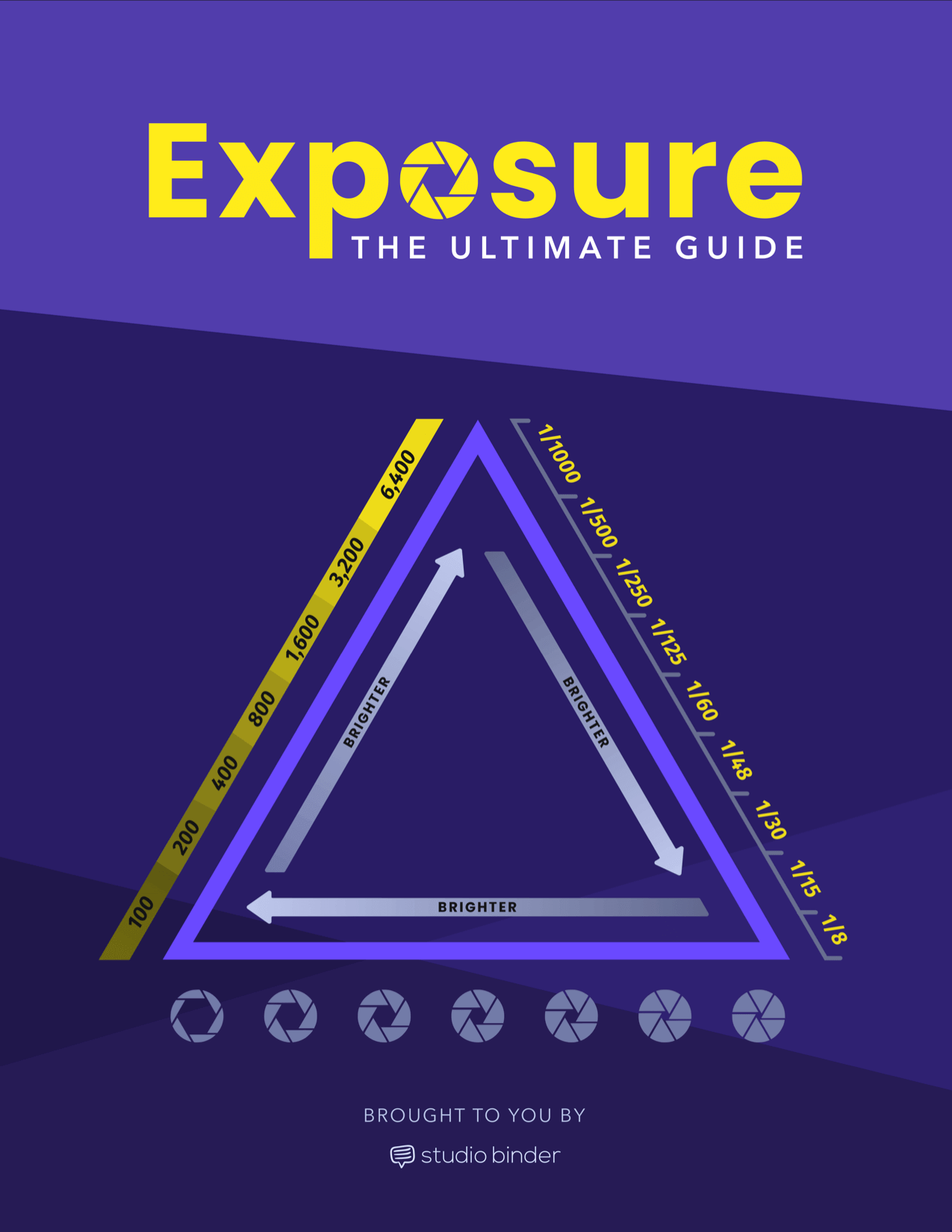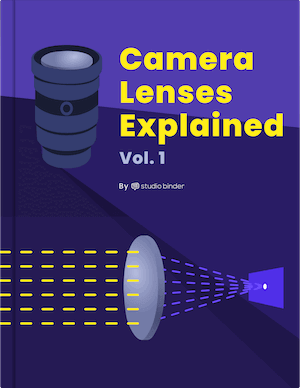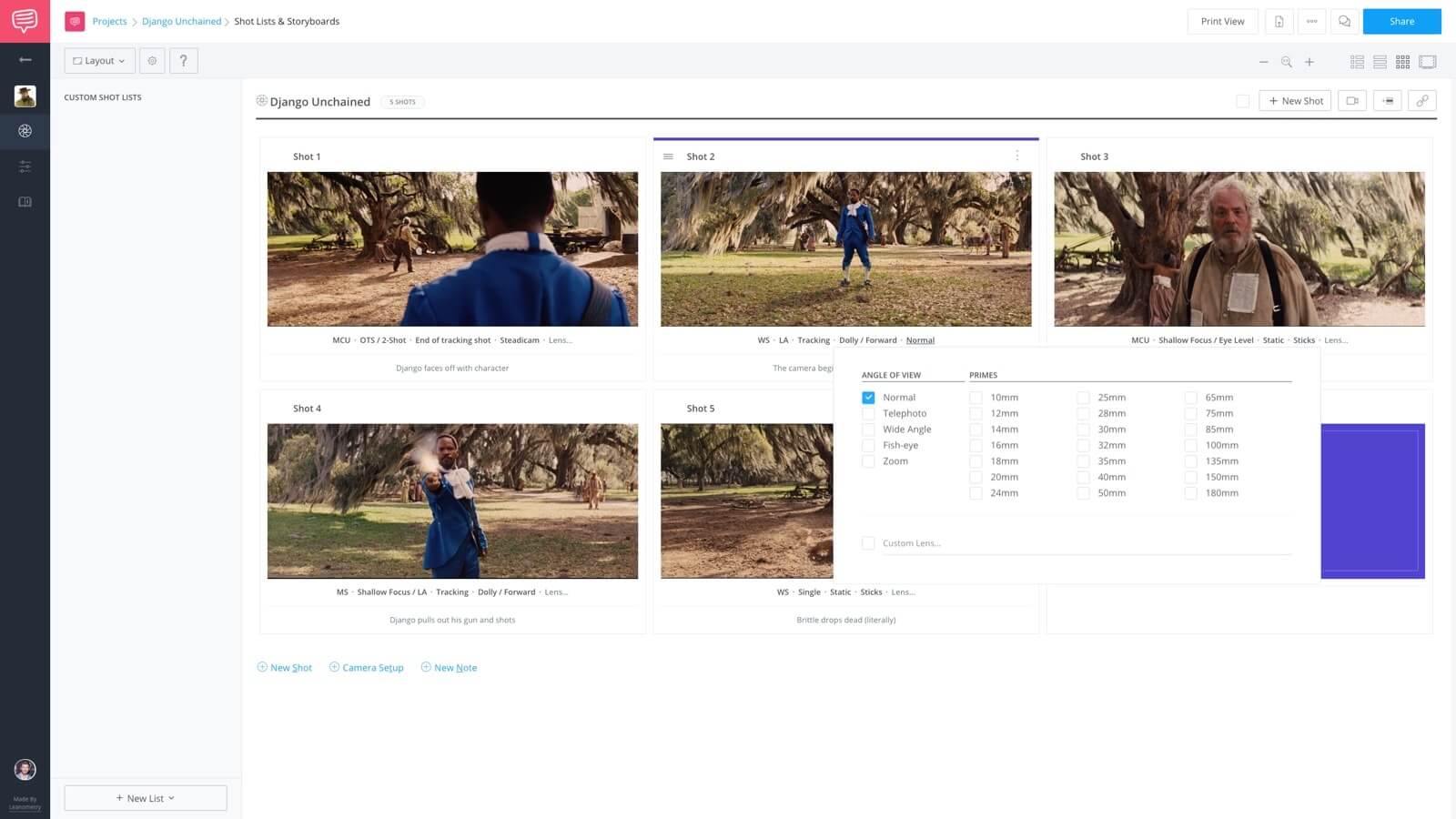Finding the best camera lenses for your camera can vastly improve your images and overall production, but understanding camera lenses can be very time-consuming. In this article, we explain how to understand lenses for photo and video so that you can not only understand how your lens and camera work together but also which lens, or set of lenses, is the best option for you moving forward. Let’s dive in.
Table of Contents
Tips for understanding camera lenses
1
Video Camera Lens basics
understanding camera lenses in a nutshell
Understanding camera lenses
Which camera lens should I buy?
A camera lens is a serious investment.
While a telephoto lens might be perfect for an independent filmmaker trying to achieve a cinematic look, it may not be the best tool for a YouTube vlogger.
So how do you actually choose the right cinema lens?
Cine lens guide
There is so much that goes into filmmaking that affects the way you might choose your lens or set of lenses. There are technical considerations, as well as narrative. This is where art meets craft.
If you’re reading this, hopefully, it’s because you’re looking for a guide to help you buy or rent the best camera lenses sometime in the near future.
If you need more general information about camera lenses, check out our article identifying the different types of camera lenses.
We have a whole series of camera lens posts that goes into the specific facets of lenses and how they work with the various camera brands and bodies.
So, who makes the best camera lens? Are Canon camera lenses the best? What about Zeiss lenses? What about Cooke lenses or Rokinons?
The truth is you may not be able to buy the best camera lenses because often times they cost the same as a new Sedan. I know people who have sold a car to buy a single lens, and I know people who’ve sold a lens to buy a car — the latter being more common.
You may be able to rent them with the addition of some production insurance.
But if you want to buy, pick a budget, and then compare the lenses in that specific range to find the best purchase for your overall needs.
How do you gauge the quality and technology of a camera lens?
Before we get into the pros and cons of these lenses, take a minute to download our FREE Ebook — Camera Lenses Explained Vol. 1 — where we cover everything you need to know about the different types of camera lenses, their unique visual characteristics, and how to use them.
Free downloadable bonus
FREE Download
Camera Lenses Explained
Every type of camera lens has distinct qualities and visual characteristics that every image-maker should understand. Download our FREE e-book to get in-depth explanations on prime vs. zoom lenses, anamorphic vs. spherical lenses, wide angle, standard, telephoto and even specialty lenses that all tell a slightly different story.
UNDERSTANDING CAMERA LENSES
What is focus throw?
Focus throw is the physical rotation of the focus ring from the MFD (Minimum Focus Distance) to ‘infinity.' The focus throw is the amount of rotation you actually have to pull focus. This is measured in degrees.
Cinema lenses have a dramatically higher "throw" than still photo lenses.
The throw is very important in cinema and television because you need to make pinpoint adjustments when pulling focus from one subject to another.
The more degrees available, the more accurate your focus pull. Performing focus pulls with still photography lenses can also shake the lens, resulting in footage that may be deemed unusable during the edit.
Here's a video on how to understand lenses — and the unique differences between cinema lenses vs. photo lenses.
Cine lenses vs photo lenses
There are focus pull accessories for still photography lenses, but the actual focus throw will likely remain the same. Understanding camera lenses means that you know exactly how large the focus throw can be.
Related Posts
UNDERSTANDING CAMERA LENSES
How is the lens built?
One of the more common complaints about a camera lens is not the image it produces, but rather the actual build of the lens.
Lens manufacturers try their best to anticipate the needs of their customers, but a certain lens may not be friendly to left-handed camera operators, or a camera stabilizer system may obstruct the focus ring of a lens.
If you're curious how Canon lenses are actually developed, take a look at this:
Understanding Camera Lenses for Beginners • Canon Lenses
If you’ve found a lens you may want to rent or buy, do some research on the B&H review section or check out a helpful forum for the specific information on that lens. You’re likely to find some great information.
The best camera lenses are built well but also often more expensive.
UNDERSTANDING CAMERA LENSES
What is the size of my lens?
The physical size and weight of your lens play a big part in its practical use. And while lens size often refers to the focal length, the actual dimensions of your lens are important as well.
The best camera lenses for one filmmaker might hinder a different filmmaker with a different focus for their content. What if the lens is too front-heavy to work with a gimbal? If you're looking into guerilla filmmaking, maybe the lens is too long to carry around on your run 'n’ gun shoot.
Bulky and durable lenses are generally better for stable footage, but sometimes you’ll want to have compact lenses that will allow you to film in small spaces.
A heavy lens may also make it harder to stabilize based on sheer weight.
Related Posts
CAMERA LENS GUIDE
Which accessories are available to me?
Some lenses have stabilization systems built inside, but sometimes that's not enough. Without using one of the best tripods or the best stabilizers, your footage might become unwatchable.
Additionally, you may own accessories that might not fit a lens because of the build. Rental houses and camera shops will let you know what accessories work best with lenses.
If you need information on a specific lens, don’t be afraid to ask. You can even build a custom camera rig that you know will fit on your lens:
How to build a camera rig
UNDERSTANDING CAMERA LENSES
Which camera will I be using?
How your lens and video camera work together is directly connected to the quality of the image you will receive.
This is also important when considering sensor size or film size.
The best DSLR lenses may be different from the best mirrorless lenses and the best cine lenses are definitely different from photography lenses.
Your budget will dictate this the most, but don’t be afraid to buy high quality camera lenses and upgrade cameras over the years.
A lens on a full-frame camera will create a different image than when on a camera with an APS-C sensor. The differences between full-frame and ASP-C sensors is something you should understand when choosing a camera lens.
2
Camera Lens Plot
HOW LENSES HELP TO TELL YOUR STORY
CAMERA LENS PLOT
How do lenses affect my story?
Some films are shot entirely with long or wide lenses because of the type of images they create. And in other cases, directors will elect to show a gradual change in a story through a gradual change in focal length.
Any of these examples are known as a lens plot, and this is where you have a predetermined lens plan that enhances the plot and story.
Understanding camera lenses is also a critical storytelling element. Our video showcases how to develop a lens plot for your story:
How to Achieve a Cinematic Look • Subscribe on YouTube
This is one of those lesser known advanced filmmaking techniques that is highly effective, but flies so under the radar that few viewers will notice until you explain it to them.
A true cinematic magic trick, if you will.
CAMERA LENS PLOT
Which lenses will be available to me?
This is important because if you know other lenses that will be available, you can make a determination on whether you want some level of lens consistency or if you prefer more variety.
The best camera lenses may only be available to you for specific focal lengths, which will mean you’ll have to decide between image quality and the ability to switch between lens magnification.
Focal length is a big deal for storytelling, so it isn’t an easy decision.
Consistency is more valuable from a production standpoint. You can switch lenses on your camera without having to adjust your matte box or follow focus.
You’ll want the maximum aperture to be the same across your lenses so you aren’t having to add production lighting to a scene to accommodate for a lens with a lower maximum aperture. You may even elect to use a set of lenses with a smaller aperture because you want that consistency.
If you want to create a drastic visual change from one scene to another, you can use different lens styles and manufacturers to achieve different looks.
You’ll be playing a dangerous game, but aren’t those the most fun?
Related Posts
CAMERA LENS PLOT
What is my subject matter?
The size, cost, and specifications of a lens can change based on your subject matter. If you are shooting a music video, the visual quality is really important.
If you're shooting Lawrence of Arabia, then having long telephoto lenses might become more important to your story:
Camera Lenses Explained • Lawrence of Arabia
Once you’ve determined a visual template for your film that includes the shot types and lighting schemes, you can determine which lenses you will need.
After you've selected the focal length and the lenses for your shoot, it's important to keep track of them on your shot list.
Here's what that looks like using StudioBinder's shot list builder:
You can easily add the type of lens, along with the specific millimeters.
CAMERA LENS PLot
What is the tone of the project?
Depending on which of the movie genres you're working in, choosing a lens has different considerations. If you are shooting a comedy, you may elect to keep things wide so as to let the performances have some room to breath.
If you’re shooting a horror film, you may want to have a nice long lens that you can obscure behind corners, or to do creepy close ups from across a room.
Understanding camera lenses will ultimately shift the film tone of your project.
CAMERA LENS PLOT
How will I frame my subjects?
This can also be important for choosing a lens on set. If your shot requires you to capture a large amount of space, a wide angle lens will create a larger view.
Plus, a wide lens will often yield a deep focus shot, which will allow your subject to remain in focus more during actor and camera movement.
Keeping a subject in focus with a long lens can be like balancing a marble on your fingertip. It requires planning, skill, and maybe even some luck.
Here is our video on tracking shots, and if you plan to feature one of these in your own project, you will want to consider using a wider lens which will limit the shake and keep your depth of field (DOF) sharp and deep.
How to Shoot Tracking Shots • Subscribe on YouTube
You'll also find out how your camera speed, stability, and shot duration all help further enhance the intention of your scene.
Your lens is an important consideration both technically and creatively.
3
Camera Lens Quality
IMPORTANT THINGS TO LOOK OUT FOR
Understanding CAMERA LENS QUALITY
What is lens breathing?
Lens breathing is the amount of shift in your angle of view when focusing. Most high-end lens manufacturers will eliminate breathing completely.
If you’re looking to buy or rent a kit for your low budget film you’ll want a kit that has as little breathing as possible, which can be found in most cine lenses.
Example of lens breathing
In still photography this isn’t an issue because an image is a single frame.
Can you imagine your composition changing while pulling focus in a scene?
Less than ideal.
UNDERSTANDING CAMERA LENS QUALITY
What is lens flaring?
Lens flaring is when light is scattered in a lens system, usually caused by bright lights that shine directly into the eye of the lens.
Lens flares are often considered to be unwanted artifacts in your image.
Lens flares are everywhere
UNDERSTANDING CAMERA LENS QUALITY
What is chromatic aberration?
Chromatic aberration is your lens failing to focus all colors to the same convergence point. This normally presents itself as “fringes” of color along boundaries that separate the light and dark parts of your image.
This is one of those really advanced lens specs that professional cinematographers give attention.
Understanding camera lenses and chromatic aberration is essential for any videographer or photographer.
Here's a video that breaks down chromatic aberration:
Chromatic aberration
Understanding CAMERA LENS QUALITY
What is bokeh?
Bokeh is a term used to describe when a lens renders out-of-focus points of light. It comes from the Japanese boke, and translates to “blur” or “haze.” There are at least three types of bokeh you can achieve:
How to understand lenses • Camera lens bokeh
As you can see from the video above, different lens quality changes the type of bokeh you’ll be able to achieve. Even your custom bokeh will look a little different when using an anamorphic lens.
understanding CAMERA LENS QUALITY
What is an aspect ratio?
The aspect ratio of a lens is determined by the sensor size (or film size) of the camera with which it is intended to mount. If a lens is built for an APS-C size sensor, it will not line up correctly with a full-frame camera.
You may have the correct lens mount, so the lens will physically attach to the camera, but it won’t have the correct opening size, and thus creates a vignette where light is absent.
Our video on aspect ratios shows you how different ratios are used for presenting final cuts of projects, but your camera lens aspect ratio cannot be changed, as it is baked in the construction of the lens.
Lens Specifications Explained • Aspect Ratios in Film
As you noticed from the video above, your subject matter can help determine which aspect ratio is best for your project.
4
Camera Lens Summary
NOW YOU KNOW THE REST OF THE STORY
VIDEO CAMERA LENS SUMMARY
Online lens test videos
Greg and the guys over at LensProToGo did a great job of putting together a playlist of videos where they test lenses for you.
LensProToGo Playlist
VIDEO CAMERA LENS SUMMARY
What’s a good lens kit to start with?
If you’re serious about filmmaking, look into this Rokinon lens bundle.
For around $1,700 you get 4 prime lenses: 24mm, 35mm, 50mm, & 85mm.
The link provided will take you to EF mount versions, so if your camera uses a different mount you will want to find that version.
If you're curious what the key differences are between Rokinon Cine DS and Non-DS Rokinon Cine lenses, take a look below:
Difference between cine and non-cine lenses
These are some of the best camera lenses for indie filmmakers, and a best seller on B&H. They also are compatible with DSLR cameras and mirrorless cameras popular in indie filmmaking, but you may need an adapter.
Don’t have $1,700?
Rent the kit at a local camera house or from a local cinematographer.
You can find prices ranging around $100/day for the kit, or $100 for an entire weekend rental.
Free downloadable bonus
FREE Download
Camera Lenses Explained
Every type of camera lens has distinct qualities and visual characteristics that every image-maker should understand. Download our FREE e-book to get in-depth explanations on prime vs. zoom lenses, anamorphic vs. spherical lenses, wide angle, standard, telephoto and even specialty lenses that all tell a slightly different story.
UP NEXT
Understanding camera lens mounts
Remember that understanding camera lenses is a combination of learning the technicals along with the storytelling techniques. After learning about the effects of a good lens, it's time to learn about camera lens mounts. In addition to that, we have various posts on each facet of camera lenses, so if there is anything you’re not sure about with regard to camera lenses, chances are we have a post that will explain everything you need to know.
Up Next: Camera Lens Mounts →
Showcase your vision with elegant shot lists and storyboards.
Create robust and customizable shot lists. Upload images to make storyboards and slideshows.




